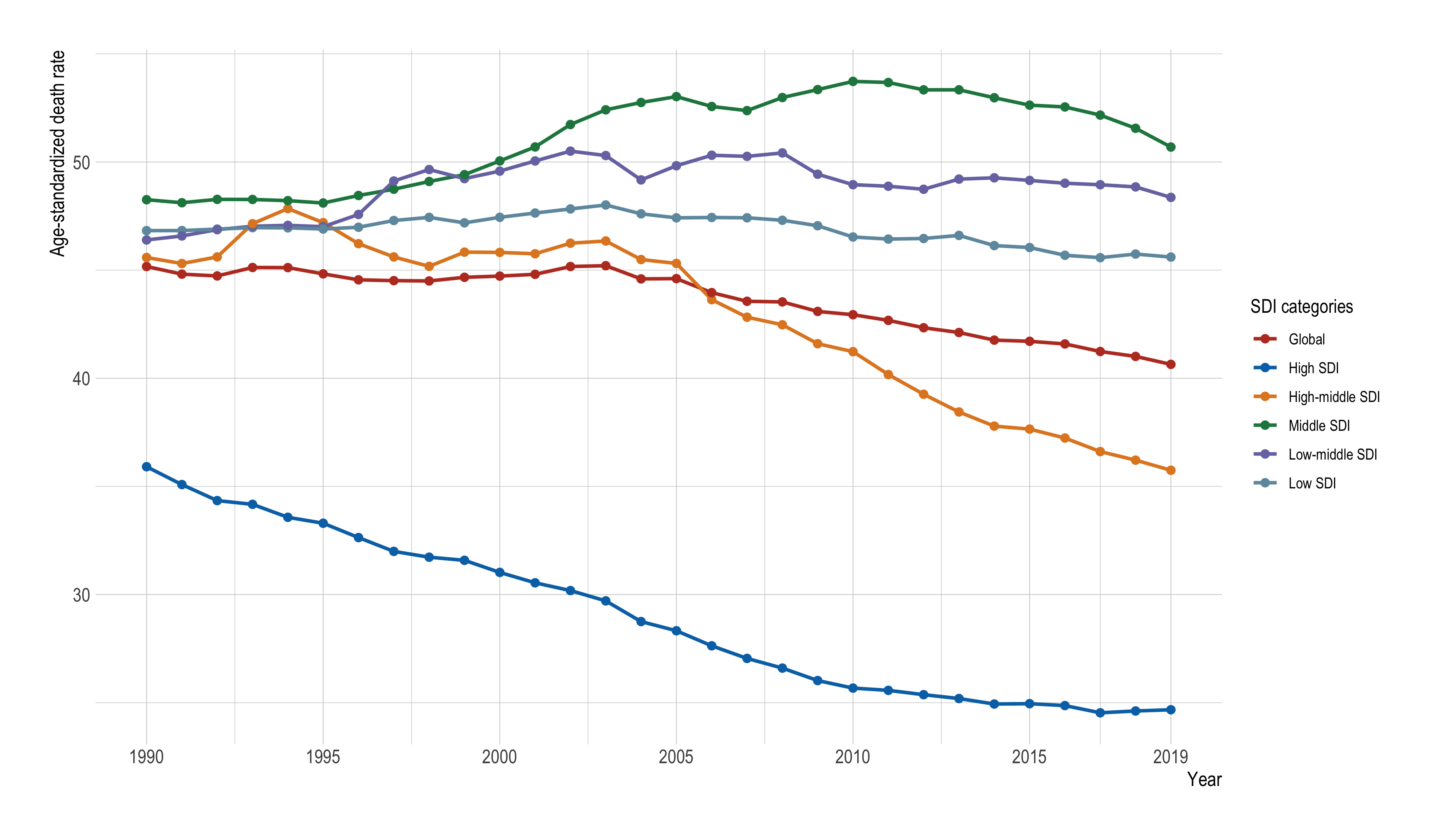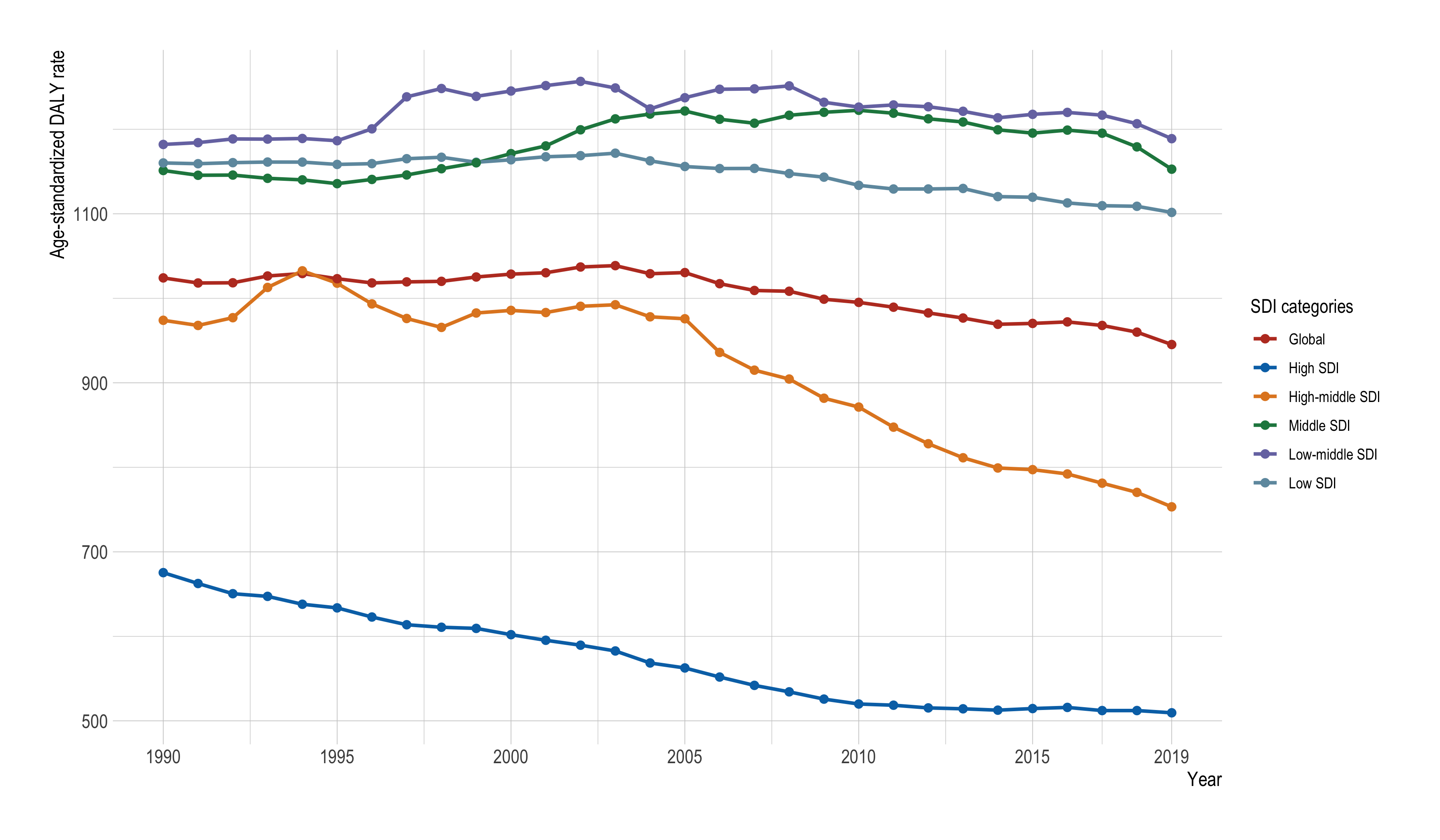Background: Kidney dysfunction is a risk factor for several health problems, such as ischemic heart disease, stroke, peripheral artery disease, chronic kidney disease, and gout. This study aims to analyze the global disease burden caused by kidney dysfunction at the national, regional, and territorial levels.
Methods: As part of our ecological investigation, we used the query tool provided by the Global Burden of Disease (GBD) Collaborative Network to gather data on summary exposure values (SEVs), deaths, disability-adjusted life years (DALYs), and the social demographic index (SDI) related to kidney dysfunction, covering the years 1990 to 2019. The study examines the outcomes of kidney dysfunction, including SEVs, deaths, and DALYs, and provides insights into their distribution by gender, age, region, SDI, countries, and globally. We employed estimated annual percentage changes (EAPCs) to analyze annual trends in these outcomes.
Results: Globally, 1.57 million (95% uncertainty interval [UI], 1.34–1.81 million) people in 1990 and 3.16 million (95% UI, 2.72–3.62 million) people died from kidney dysfunction in 2019. The absolute annual burden from SEV, deaths, and DALYs attributed to kidney dysfunction increased by 18% (95% UI, 8 – 31%), 101.0% (95% UI, 88 – 113%), and 82% (95% UI, 72 – 92%) from 1990 to 2019. The age-standardized SEV, death, and DALY changed by 10.6% (95% UI, 7.7% to 14.7%), -10% (95% UI, −15.5 to −4.6%), and -7.7% (95% UI, −12.9 to −33), respectively, during the study period from 1990 to 2019. The EAPC of SEV, death, and DALY from 1990 to 2019 is 0.34 (95% UI, 0.32, 0.37), -0.36 (95% UI, -0.42, -0.3), and -0.26 (95% UI, -0.32, -0.19). According to the SDI levels, high and high-middle areas showed trends of decreased global disease burden of kidney dysfunction, with death changed of -31.3% (95% UI, -36.3% to -25.4%) and -21.6% (95% UI, -26.8%, -16.2%), and DALY changed of -24.6% (95% UI, -29.3%, -19.3%) and -22.7% (95% UI, -27.5%, -17.7%). At the same time, the middle and low-middle areas showed an increased trend of the burden of kidney dysfunction, with death change of 5% (95% UI, -3.2%, 13.7%) and 4.2% (95% UI, -5.8%, 13.7%), while DALY changed of 0.1% (95% UI, -6.8%, 7.4%) and 0.6% (95% UI, -8.4%, 9.4%). The low SDI regions showed a decreasing trend of death and DALY, including -2.6% (95% UI, -12.7%, 6.9%) and -5% (95% UI, -13.5%, 4%).
Conclusions: Over the past 30 years, the overall age-standardized burden of kidney dysfunction has remained stable. However, it has increased in moderate SDI countries, while the decreasing trend is disappearing in high SDI countries. This changing pattern of the disease highlights the effectiveness of healthcare policies in high-SDI countries and could assist low-SDI countries in managing the disease burden of kidney dysfunction.


